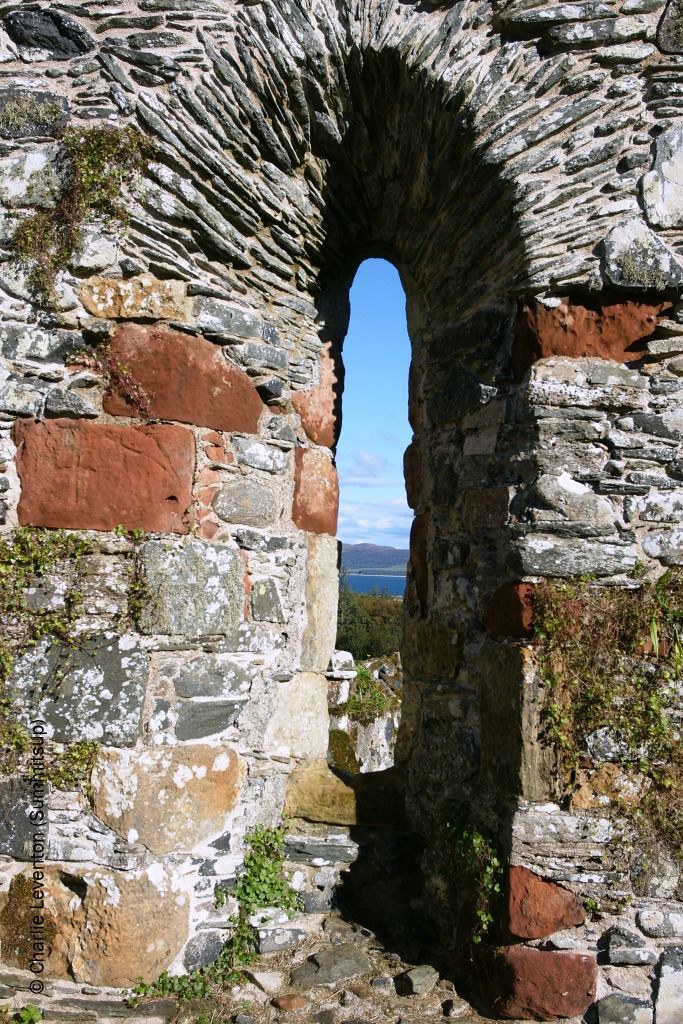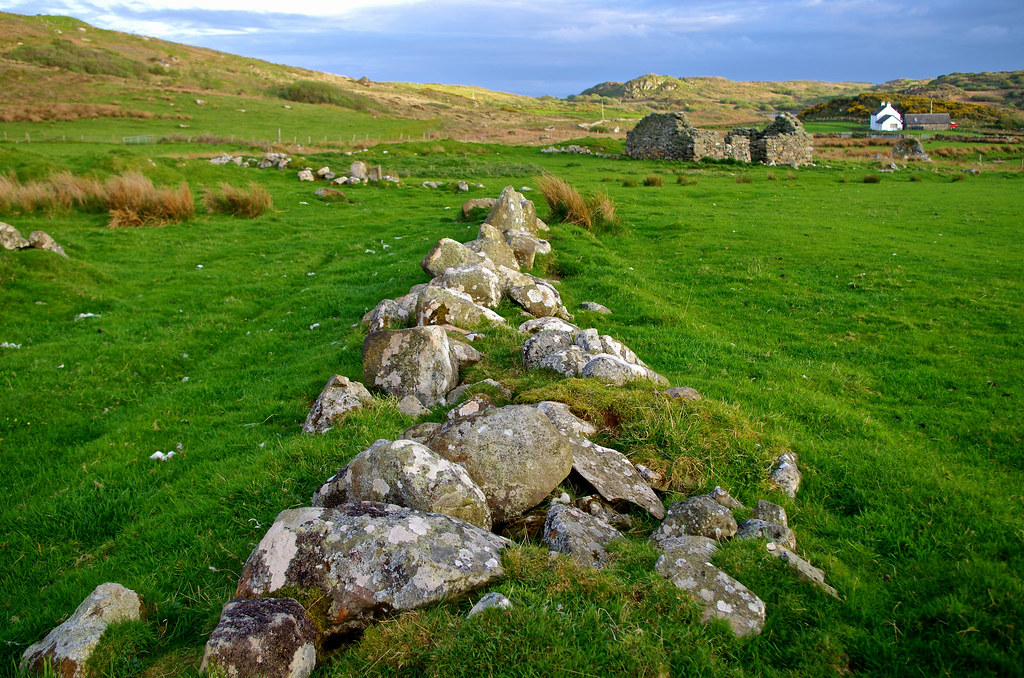Antiquities
From end to end of the island there are many traces of dwellings and burial sites, most of which are difficult to find and harder still to interpret without a little help.
One of the best known antiquities in Gigha is the ruined church of Kilchattan, 'Ecclesia Sancti Catani in Gigha', of the Register of the Privy Seal (1510). The church is a dedication to St Catan, an Irish missionary of the 6th century, who came to Argyll and Bute spreading the gospel throughout Kintyre and some of the Western Isles.
Kilchattan church is a typical example of 13th century design - a small rectangular building with a steep roof, the length about twice its breadth, and with lancet windows in all of the walls.
The north facing lancet wall has, in recent years, been restored with the original stones and through the window are stunning views over the island to the mainland of Scotland.
The octagonal font still remains, and can be seen in the recess below the eastern window. It is two feet in diameter and the basin is eight inches deep with a central drain.
Almost the entire floor of the church is covered with graveslabs. There are 33 including fragments. A row of great slabs - monuments of Heads of the local House - lie across the church from side to side immediately in front of the altar space. They have been more cared for than the rest and are therefore much better preserved.

